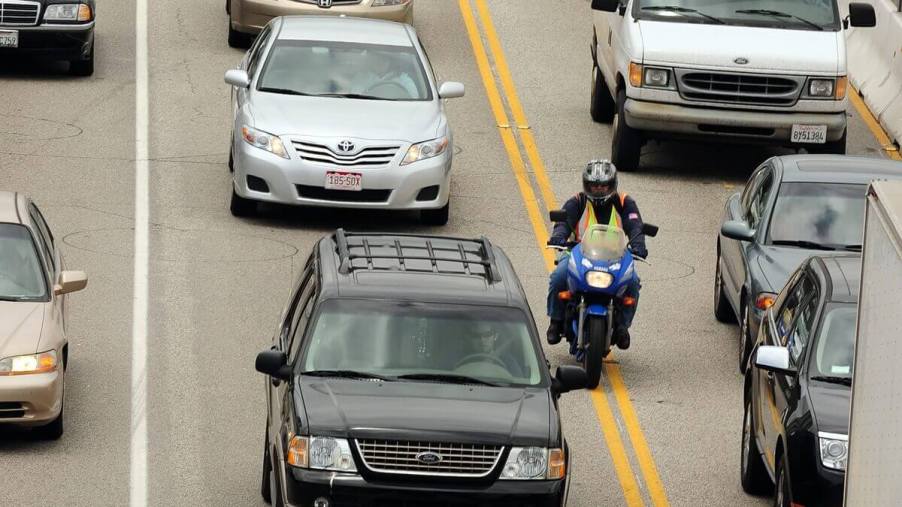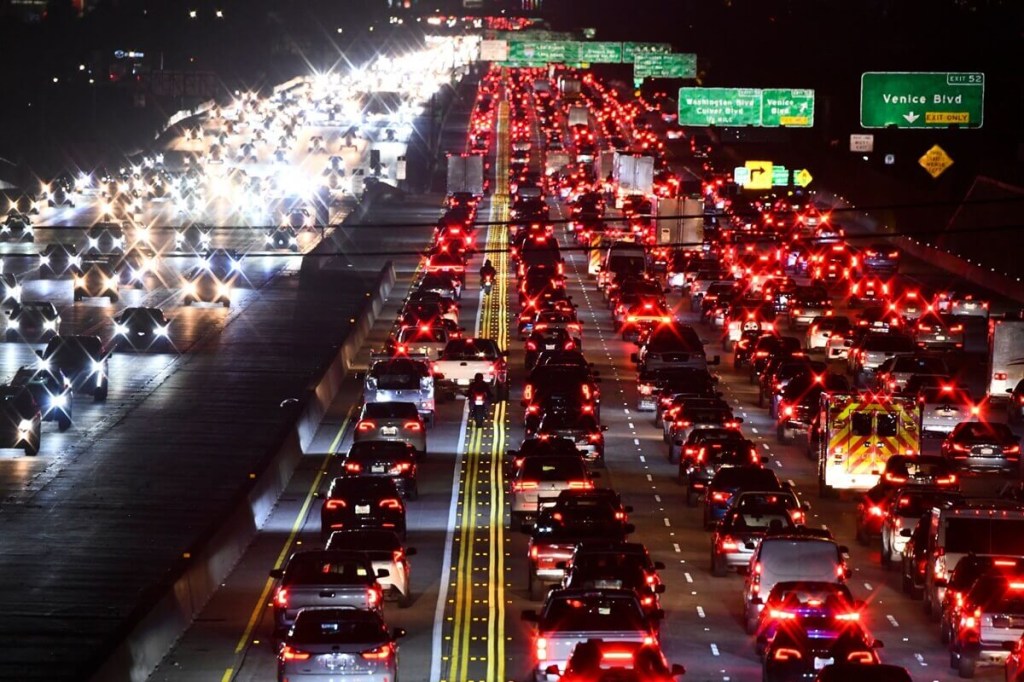
Texas Lane Splitting Laws In 2023: Outlawing Splitting and Filtering Is Short-Sighted and Marginalizing
In this article:
The state of Texas recently outlawed the gray-area motorcycle riding practice of lane-splitting, citing that the maneuver compromises motorcycle safety and increases the likelihood of accidents. However, the Lone Star State’s short-sighted ban marginalizes a large population of riders. It’s an unfortunate development for riders who commute on motorcycles to save money and the environment.
Why is lane splitting illegal in the US?

“Lane splitting,” the practice wherein a motorcyclist travels between lanes of traffic on densely packed roadways, is illegal in most U.S. states. However, states like Kentucky and New Jersey have no specific laws forbidding it.
That doesn’t mean that it’s legal, though. Police officers can issue reckless driving citations for behaviors they deem unsafe, like lane splitting. On the other hand, California permits splitting and filtering. Filtering, not unlike splitting, involves a motorcycle moving past stationary vehicles. However, filtering usually involves bikes trickling around queues of traffic at intersections, lights, and other scenarios involving stopped cars.
Is lane splitting legal in Texas?
As of the first of September, lane splitting is illegal in the state of Texas. That ruling puts an end to the gray area wherein riders split lanes, taking the option away from the state’s over 343,000 riders.
Meanwhile, the state’s distracted drivers kill hundreds of people every year on motorcycles and other modes of transportation. In 2022, the Texas Department of Transportation reported that distracted drivers killed 487 people and seriously injured another 2,824 on the state’s roads. Of course, that figure refers to accidents where law enforcement had proof indicating driver distraction.
What are the benefits of lane splitting?
While vocal critics of the practice are quick to use anecdotal evidence to tout the dangers of lane splitting, the practice has many benefits. Splitting decreases traffic congestion, cuts down on harmful tailpipe emissions, and may prevent air-cooled bikes from overheating.
Further, the average cost of motorcycles in the United States is under $10,000. As a result, two-wheeled options cost $27,000 less than the nationwide average for used cars in 2022, per Statista. In addition to being cheaper transportation options than cars, trucks, and SUVs, lane splitting may lower the likelihood that distracted and inattentive drivers will rear-end riders.
Moreover, a UC Berkeley study found that in accidents involving lane splitting, motorcyclists suffered fewer head injuries and fatalities, especially the 69% of riders traveling less than 15 mph over the flow of traffic.
Where is lane splitting legal in the world?
Lane splitting is a generally accepted practice on much of the world’s motorways, including countries like France, Spain, the Netherlands, Italy, India, and New Zealand. In other cases, splitting and filtering aren’t expressly prohibited, and many law enforcement officials don’t issue citations.
Whether it’s in Texas or anywhere else in the United States, outlawing a practice that ultimately cuts down on traffic congestion because it’s easier to accommodate distracted and, let’s face it, subpar driving is marginalizing. It’s like taking the stove out of your home because your roommate is too simple to stop touching it when it’s hot. I am a son of Texas. I love Texas. But Texas has a problem, and it isn’t motorcyclists or motorcycle safety; it’s priorities.
What do you think of lane splitting? Should it be legal? Or should it disappear altogether? Share your motorcycle safety thoughts in the comments below, and keep up with MotorBiscuit for the latest motorcycle and automotive news!



